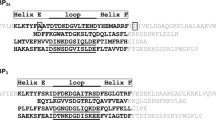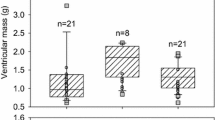Abstract
The grunting toadfish, Allenbatrachus grunniens, is an ornamental fish in freshwater aquariums, and it has the ability to produce sounds. The sonic muscle of the toadfish is the fastest vertebrate muscle ever measured, and the rates of Ca2+ transport and cross-bridge dissociation are also the fastest. Parvalbumins (PAs) are Ca2+-binding proteins that help in muscle relaxation in vertebrates. Several PA isoforms have been identified in variable ratios in different muscle types. Both male and female grunting toadfish have intrinsic sonic muscles attached to their swim bladders, but no significant difference in morphology between male and female sonic muscles has been observed. In this study, we used SDS-PAGE and western blotting to characterize the total PA expression and to identify the PAs from the sonic muscle and the white body muscle of A. grunniens. Although the total PA concentrations were similar in sonic and white muscles, there were differences in the isoform percentages. Two and four PA isoforms were identified from sonic muscle and white muscle, respectively. The estimated sizes of PA1, PA2, and PA3 in the sonic muscle of the grunting toadfish were 10, 10.5, and 10.5 kDa, respectively, and the isoelectric points of PA1, PA2, and PA3 in the grunting toadfish were 4.77, 4.58, and 4.42, respectively. In the sonic muscle, the primary PA isoform was PA1, which comprised more than 94 % of total PA, whereas PA2 comprised only 5 % of the total PA content. In contrast, in white muscle, the primary isoform was PA2, which comprised 58 % of the total PA. Both PA1 (with PA1a) and PA3 represented approximately 20 % of the total PA in white muscle. These results indicate that there is no positive correlation between a high PA content and the speed of muscle relaxation; however, PA1 might have the greatest effect on the relaxation of the grunting toadfish’s sonic muscle.





Similar content being viewed by others
References
Appelt D, Shen V, Franzini-Armstrong C (1991) Quantitation of Ca ATPase, feet and mitochondria in superfast muscle fibres from the toadfish, Opsanus tau. J Muscle Res Cell Motil 12:543–552
Barimo JF, Fine ML (1998) Relationship of swim-bladder shape to the directionality pattern of underwater sound in the oyster toadfish. Can J Zool 76:134–143
Bass AH, Marchaterre MA (1989) Sound-generating (sonic) motor system in a teleost fish (Porichthys notatus): sexual polymorphism in the ultrastructure of myofibrils. J Comp Neurol 286:141–153
Berchtold MW, Brinkmeier H, Müntener M (2000) Calcium ion in skeletal muscle: its crucial role for muscle function, plasticity, and disease. Physiol Rev 80:1215–1265
Carlson BA, Bass AH (2000) Sonic/vocal motor pathways in squirrelfish (Teleostei, Holocentridae). Brain Behav Evol 56:14–28
Chen SF, Huang BQ, Chien YY (1998) Histochemical characteristics of sonic muscle fibers in Tigerperch, Terapon jarbua. Zool Studies 37:56–62
Connaughton MA (2004) Sound generation in the searobin (Prionotus carolinus), a fish withalternate sonic muscle contraction. J Exp Biol 207:1643–1654
Connaughton MA, Taylor MH (1995) Seasonal and daily cycles in sound production associated with spawning in weakfish, Cynoscion regalis. Environ Biol Fish 42:233–240
dos Santos ME, Modesto T, Matos RJ, Grober MS, Oliveira R, Canário A (2000) Sound production by the Lusitanian toadfish, Halobatrachus didactylus. Bioacoustics 10:309–321
Erickson JR, Sidell BD, Moerland TS (2005) Temperature sensitivity of calcium binding for parvalbumins from Antarctic and temperate zone teleost fishes. Comp Biochem Physiol 140A:179–185
Fawcett DW, Revel JP (1961) The sarcoplasmic reticulum of a fastacting fish muscle. J Cell Biol 10(Suppl):89–109
Feher JJ, Waybright TD, Fine ML (1998) Comparison of sarcoplasmic reticulum capabilities in toadfish (Opsanus tau) sonic muscle and rat fast twitch muscle. J Muscle Res Cell Motil 19:661–674
Fine ML, Pennypacker KR (1988) Histochemical typing of sonic muscle from the oyster toadfish. Copeia 1988:130–134
Fine ML, Pennypacker KR, Drummond KA, Blem CR (1986) Concentration and location of metabolic substrates in fast toadfish sonic muscle. Copeia 4:910–915
Fine ML, Burns NM, Harris TM (1990) Ontogeny and sexual dimorphism of the sonic muscle in the oyster toadfish. Can J Zool 68:1374–1381
Fine ML, Bernard B, Harris TM (1993) Functional morphology of toadfish sonic muscle fibers: relationship to possible fiber division. Can J Zool 71:2262–2274
Fine ML, Malloy KL, King C, Mitchell SL, Cameron TM (2001) Movement and sound generation by the toadfish swimbladder. J Comp Physiol A Neuroethol Sens Neural Behav Physiol 187:371–379
Focant B, Mélot F, Collin S, Chikou A, Vandewalle P, Huriaux F (1999) Muscle parvalbumin isoforms of Clarias gariepinus, Heterobranchus longifilis and Chrysichthys auratus: isolation, characterization and expression during development. J Fish Biol 54:832–851
Gerday C (1982) Soluble calcium-binding proteins from fish and invertebrate muscle. Mol Physiol 2:63–87
Gillis JM (1985) Relaxation of vertebrate skeletal muscle. A synthesis of the biochemical and physiological approaches. Biochim Biophys Acta 811:97–145
Goodman M, Pechère JF, Haiech J, Demaille JG (1979) Evolutionary diversification of structure and function in the family of intracellular calcium-binding proteins. J Mol Evol 13:331–352
Greenfield DW, Winterbottom R, Collette BB (2008) Review of the toadfish genera (teleostei: Batrachoididae). Proc Natl Acad Sci USA 59:665–710
Heizmann CW, Berchtold MW, Rowlerson AM (1982) Corrrelation of parvalbumin concentration with relaxation speed in mammalian muscles. Proc Natl Acad Sci USA 79:7243–7247
Hou TT, Johnson JD, Rall JA (1991) Parvalbumin content and Ca2+ and Mg2+ dissociation rates correlated with changes in relaxation rates of frog muscle fibers. J Physiol 441:285–304
Huriaux F, Lefebvre F, Focant B (1983) Myosin polymorphism in muscles of the toadfish, Opsanus tau. J Muscle Res Cell Motil 4:223–232
Klug GA, Leberer E, Leisner E, Simoneau J, Pette D (1988) Relationship between parvalbumin content and the speed of relaxation in chronically stimulated rabbit fast-twitch muscle. Pflugers Arch 411:126–131
Ladich F, Fine ML (2006) Sound-generating mechanisms in fishes: A unique diversity in vertebrates. In: Ladich F, Collin SP, Moller P, Kapoor BG (eds) Communication in fishes. Science Publisher, USA, pp 3–43
Loesser KE, Rafi J, Fine ML (1997) Embryonic, juvenile, and adult development of the toadfish sonic muscle. Anat Rec 249:469–477
Mitchell S, Poland J, Fine ML (2008) Does muscle fatigue limit advertisement calling in the oyster toadfish Opsanus tau? Anim Behav 76:1011–1016
Nien PY (2009) Sexual differences in proteomics of the sonic muscles in three Johnius (Sciaenidae) species. Master thesis, National Sun Yat-sen University, Taiwan, 39 pp
Parmentier E, Diogo R (2006) Evolutionary trends of swimbladder sound mechanisms in some teleost fishes. In: Ladich F, Collin SP, Moller P, Kapoor BG (eds) Communication in fishes. Science Publisher, USA, pp 43–68
Parmentier E, Gennotte V, Focant B, Goffinet G, Vandewalle P (2003) Characterization of the primary sonic muscles in Carapus acus (Carapidae): a multidisciplinary approach. Proc Biol Sci 270:2301–2308
Parmentier E, Lagardere JP, Braquegnier JB, Vandewalle P, Fine ML (2006) Sound production mechanism in carapid fish: first example with a slow sonic muscle. J Exp Biol 209:2952–2960
Rice AN, Bass AH (2009) Novel vocal repertoire and paired swimbladders of the three-spined toadfish, Batrachomoeus trispinosus: insights into the diversity of the Batrachoididae. J Exp Biol 212:1377–1391
Rome LC (2006) Design and function of superfast muscles: new insights into the physiology of skeletal muscle. Annu Rev Physiol 68:193–221
Rome LC, Klimov AA (2000) Superfast contractions without superfast energetics: ATP usage by SR-Ca2+ pumps and crossbridges in the toadfish swimbladder muscle. J Physiol 526:279–298
Rome LC, Lindstedt SL (1998) The quest for speed: muscles built for high-frequency contractions. News Physiol Sci 13:261–268
Rome LC, Syme DA, Hollingworth S, Lindstedt SL, Baylor SM (1996) The whistle and the rattle: the design of sound producing muscles. Proc Natl Acad Sci USA 93:8095–8100
Rome LC, Cook C, Syme DA, Connaughton MA, Ashley-Ross M, Klimov A, Tikunov B, Goldman YE (1999) Trading force for speed: why superfast crossbridge kinetics leads to superlow forces. Proc Natl Acad Sci USA 96:5826–5831
Sanuki H, Hata M, Takeucki M (2003) Distribution of calcium bound to parvalbumin in water-soluble fractions in some fish muscles. Nippon Suisan Gakk 69:387–392
Skoglund CR (1961) Functional analysis of swim-bladder muscles engaged in sound production of the toadfish. J Biophys Biochem Cytol 10(Suppl):187–200
Sprague MW (2000) The single sonic muscle twitch model for the soundproduction mechanism in the weakfish, Cynoscion regalis. J Acoust Soc Am 108:2430–2437
Szatkowski ML, Westfall MV, Gomez CA, Wahr PA et al (2001) In vivo acceleration of heart relaxation performance by parvalbumin gene delivery. J Clin Invest 107:191–198
Tikunov BA, Rome LC (2009) Is high concentration of parvalbumin a requirement for superfast relaxation? J Muscle Res Cell Motil 30:57–65
Wang HC (2010) The swimbladder morphology and vocal repertoire of the grunting toadfish, Allenbatrachus grunniens (Batrachoididae). Master thesis, National Sun Yat-sen University, Taiwan, 71 pp
Wilwert JL, Madhoun NM, Coughlin DJ (2006) Parvalbumin correlates with relaxation rate in the swimming muscle of sheepshead and kingfish. J Exp Biol 209:227–237
Acknowledgments
This study was supported by Grant 100AB016 from the Office of Research and Development Affairs, National Kaohsiung Marine University, Grant NSC97-2113-M-006-005-MY3, NSC100-2313-B-022-004from the National Science Council, and the National Sun Yat-sen University Project for Promoting Academic Excellence & Developing World Class Research Centers from the Ministry of Education of Taiwan. Data on this paper are from the dissertation of Fu-Ming Hsieh in partial fulfillment of the requirements for a Master’s degree at the Institute of Marine Biology, National Sun Yat-sen University, Taiwan.
Author information
Authors and Affiliations
Corresponding author
Electronic supplementary material
Below is the link to the electronic supplementary material.
Rights and permissions
About this article
Cite this article
Chiu, KH., Hsieh, FM., Chen, YY. et al. Parvalbumin characteristics in the sonic muscle of a freshwater ornamental grunting toadfish (Allenbatrachus grunniens). Fish Physiol Biochem 39, 107–119 (2013). https://doi.org/10.1007/s10695-012-9683-4
Received:
Accepted:
Published:
Issue Date:
DOI: https://doi.org/10.1007/s10695-012-9683-4




